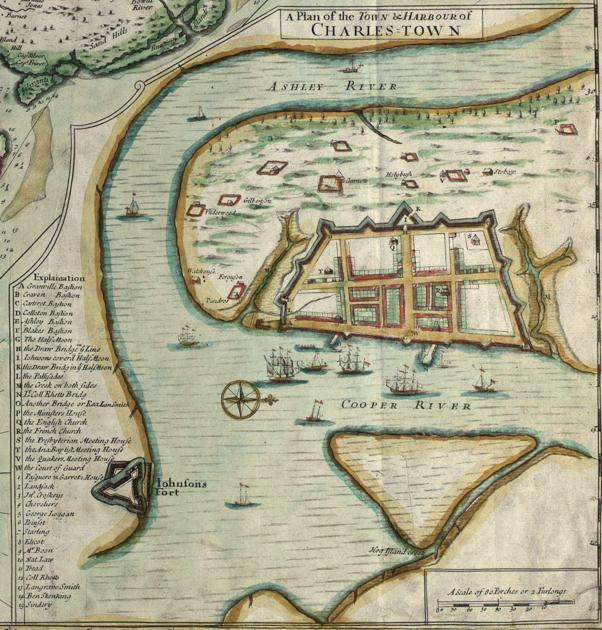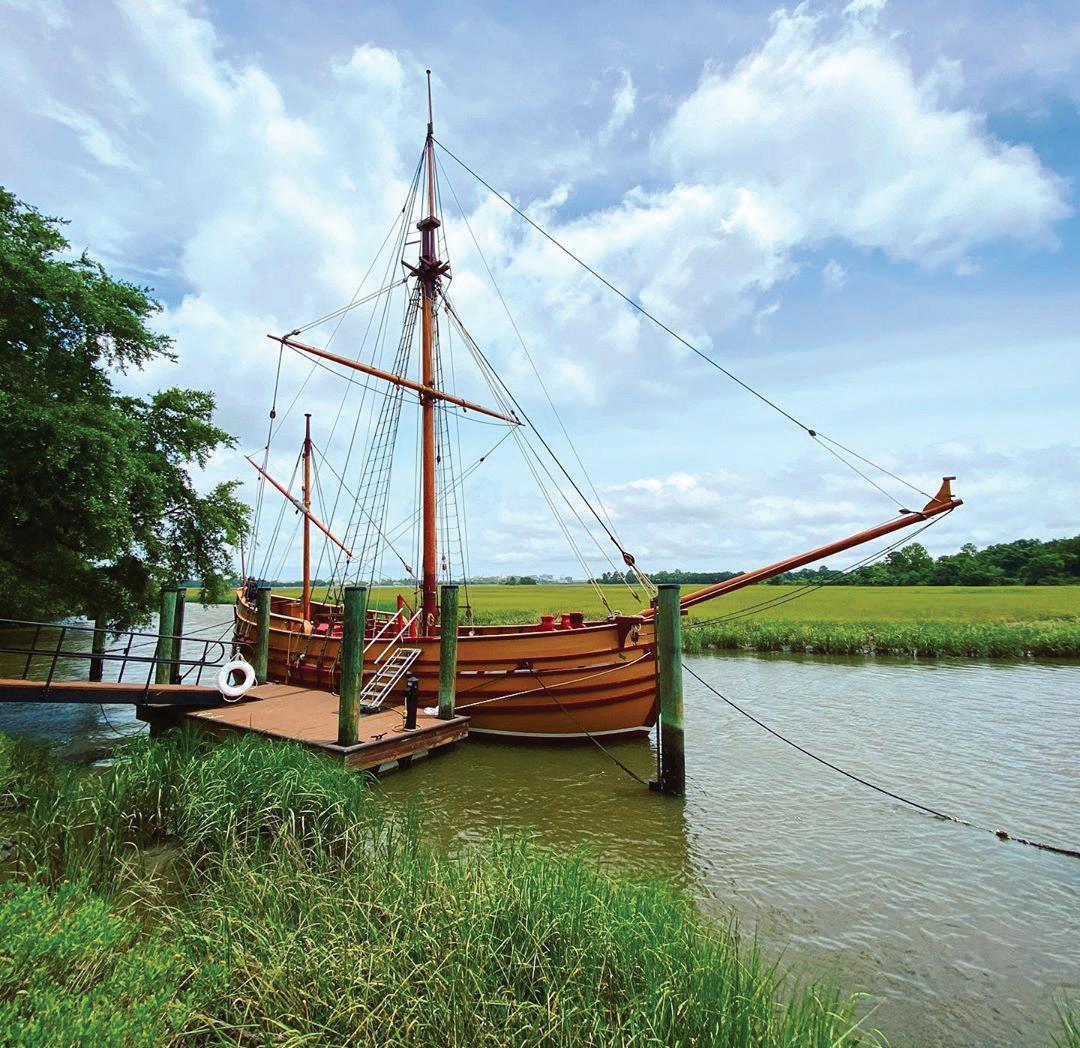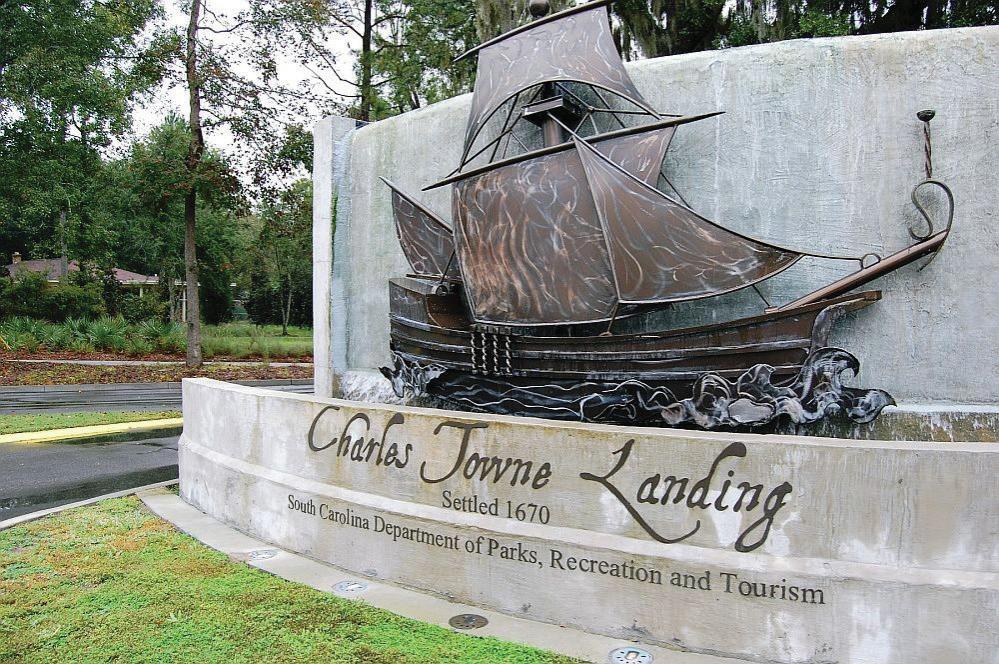
4 minute read
Mark W. Buyck II: The English Arrive
from August 2021
by VIP Magazine

the English arrive
Advertisement
story by Mark W. Buyck, III
In the last couple of months, we have described early Spanish and French attempted settlements in South Carolina. The first successful permanent settlement in South Carolina was the English settlement of Charles Towne in April 1670. Charleston would become the fourth largest city in the British North American colonies by the time of the Revolutionary War. The only larger cities were Philadelphia, New York City, and Boston. The expedition to Carolina was financed by the eight (8) Lords Proprietors of Carolina. Three ships, their crew, and passengers set sail from England in August 1669. The Lords Proprietors held a charter from King Charles, II, granting them all the land south of Virginia into Spanish Florida and west to the Pacific Ocean. The expedition reached Barbados in October 1669 and spent several months there. Barbados was first settled by the British in 1627. It is the easternmost of the Caribbean Islands and British settlers found the island ideally situated for farming sugarcane. The plantation system with large numbers of African slaves was the predominate economic model. During the mid-17th century, the small island of Barbados had a larger population than the British settlements in New England and the Chesapeake Bay area. Its influence on the settlement of Charleston and the creation of the South Carolina colony remains evident today. The 200-ton Frigate Carolina was the only one of the three ships to make its way to the Carolina coast. The 93 passengers on board the Carolina sailed into Port Royal but deemed it too close to the Spanish permanently settled in St. Augustine. A friendly tribe of Kiawah Indians pointed them northward to an area they described as better suited for farming. The Carolina sailed into Charleston Harbor in April 1670, sailing past Oyster Point, the site of the Battery today, and headed slightly further inland on the Ashley River. The Carolina followed the Old Town Creek on the south side of the Ashley River as far as it could go. The new arrivals began erecting shelters and named their town Albemarle Point, after Duke Albemarle, one of the Lords Proprietors. Indentured servants outnumbered “Masters” by about two to one. The Indentured servants were typically white Englishmen bound to serve their owners for two to five years in return for passage to the new world. All free men in the colony were provided an initial allocation of 150 acres of land with an additional 100 acres for each indentured servant belonging to them. Upon service of the indentures, those free men were entitled to their own 150-acre plots.
a replica 17th-century trading vessel visitors can board and explore beneath the deck at Charles Towne Landing


While Santa Elena was ultimately abandoned, it cannot be said that the settlement was a failure. The town was occupied for most of 21 years. It can be considered a “sister city” to the more widely recognized St. Augustine.
majestic alley of oaks that will take your breath away
The Lords Proprietors promoted emigration to the colony. By 1670, open land was scarce in Barbados, Bermuda, and other British colonial islands. The English custom at the time was that the first son would inherit his father’s real estate leaving the remaining sons to fend for themselves. Many of the early settlers of the Carolina colony were second, third, and fourth sons from the Caribbean colonies. The first settlers went straight to work. They established defensive fortifications and a militia system. They established a government relying mainly on John Locke’s Fundamental Constitutions of Carolina and created a legislature which they called the Grand Council. Spanish ships arrived by sea in August 1670 but were so impressed with the defenses of the settlement that they called off the planned attack. The Lords Proprietors, intending to curry favor with the King, insisted that the new settlement be named Charles Town instead of Albemarle Point. By 1672 the population of the colony was 268 men, 69 women, and 59 children. These figures however did not include the ever-growing slave population. South Carolina was the only English colony where slavery was established at the outset as a fundamental component of the colony’s economic system. The Barbadians were well versed in the plantation system and experienced with working large tracts of land with slave labor. The colony also adopted the Barbadian slave code. By 1674 the Barbadian emigrants had control of both houses of the legislature. These men’s personal and business aspirations were often opposed to the wishes of the Lords Proprietors back in England. As emigrants began arriving, many crossed the Ashley River and began settling the peninsula between the Ashley and Cooper Rivers. By 1679 there were 20 houses built in the Oyster Point area and another 20 under construction. In December 1969, the Lords Proprietors announced that “Oyster Point is … a more convenient place to build a towne on than that… pitched on by the first settlers” and that “the people’s inclinations tend thither.” Therefore, “Oyster Point is the place wee doe appoint for the port towne… which you are to call Charles Towne.” The government functions were immediately moved across the river and the original Albemarle Point settlement was eventually abandoned. It is now the Charles Town Landing State Historic Site https://southcarolinaparks. com/charles-towne-landing. By the end of the Revolutionary War, the name Charleston became the preferred version.

248 West Evans Street | Florence, SC | 843.662.3258 2050 Corporate Centre’ Drive, Suite 230 Myrtle Beach, SC | 843.650.6777











